#Gigondas
Text

Clocher et tour de l'horloge, église, Gigondas, Vaucluse, 2016
#buildings#church#belfry#clock tower#gigondas#vaucluse#provence-alpes-côte-d'azur#france#2016#photographers on tumblr
46 notes
·
View notes
Photo

🇫🇷 🍷 Happy Tuesday! Loving this organic and biodynamic 2019 Pierre Amadieu Romane Machotte Gigondas (91 pts, $28) from Rhône tonight. Arrived in LCBO VINTAGES over the weekend. Full review: https://bit.ly/3vBYYAo
#wine#vin#red wine#red blend#grenache#syrah#gigondas#rhone#france#organic#biodynamic#wiyg#winelover#wineoclock#lcbo#tuesday night#happy tuesday
2 notes
·
View notes
Photo
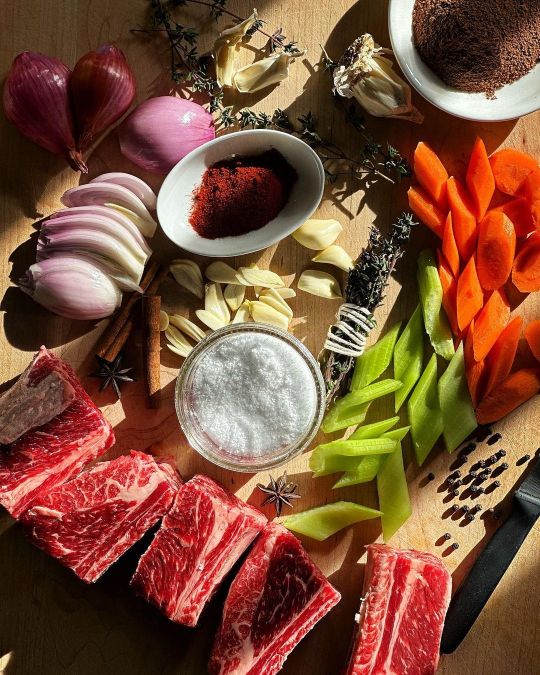
Like washing your car will surely bring rain, the moment short ribs hit the board… the sun came out! No matter, were still damn good, made better with a Grand Montmirail Gigondas. And, with storms lined up off shore like waves, there’s plenty left over for the wet day ahead. #shortribs #braised #gigondas #eatclean @seletbeurre https://www.instagram.com/p/CnXIiw7rtOM/?igshid=NGJjMDIxMWI=
0 notes
Photo








Je reprends mon projet de présenter la plupart de mes 52620 photos (oui, ça a encore augmenté !).
2006. Jean-Luc voulait retrouver Suzette dans le Vaucluse. On y va donc dans un automne doux et lumineux...
- les 4 premières : Gigondas et ses vignobles
- le reste : Le Barroux
1 note
·
View note
Text
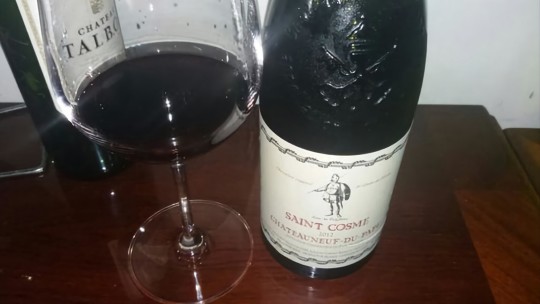

Saint Cosme is my fav winery!
#wine#lover#chateauneuf du pape#gigondas#valbelle#gigondas valbelle#saint cosme#rhone#chateau de saint cosme
0 notes
Text
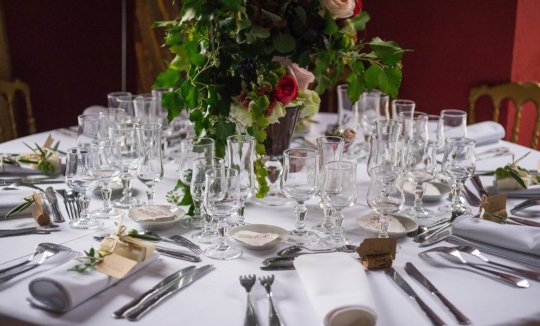
best holiday south france
If you're looking for beautiful family holiday destination in France. The best holiday south france for families Local wines include Chateauneuf des Papes, Gigondas, Lirac, Tavel and more. Visit our website http://chateau-st-victor-la-coste.com/
0 notes
Text
🇫🇷❓❓Hello les amoureux du tire-bouchon. Et vous, aimez-vous les Cairanne en blanc ❓❓🇫🇷

🍇🍷AOP Cairanne blanc 2022 cuvée L'esprit de Papet du domaine de Brusset @laurentbrusset 🍇🍷:
🍇 :
Roussanne
Viognier
🏺:
Âge des vignes : 25 ans.
Rendement : 25 hl/ha.
Récolte : 100 % manuelle avec tri.
Élevage : 10 mois en fûts sur lies fines.
💰:
19,00€ / bouteille
👁️ :
Une robe de couleur or paille
👃 :
Un nez sur des notes de fruits à noyau, acacia, épices.
💋 :
En bouche, on a un vin minéral, avec une belle rondeur. Sur des arômes de pêche jaune, poire, nectarine, poivre blanc. Des notes d'amendes et noisettes torréfiées apporté par l'élevage. Une bonne longueur en bouche avec une finale sur fraîche sur le zeste de citron.
📜En résumé📜 :
Un très beau Cairanne blanc qui sera délivré tout son potentiel dans quelques années. Assurément un blanc de garde. Hâte de le regoûter dans quelques années pour voir l'évolution. J'ai adoré cette dégustation.
🧆Dégusté sur des Bouchées à la reine🧆.
🍷Quelques accords mets et vin possible avec cette cuvée🍷 : Chapon à la sauce forestière, Coquilles Saint Jacques aux agrumes, Croustillants de fromage de chèvre, Lotte au gingembre,....
📌N'oubliez pas, boire un canon c'est sauver
un vigneron. Allez voir le site internet du domaine pour voir toutes les cuvées et promotions du moment📌.
🔞« L'abus d'alcool est dangereux pour la santé, à consommer avec modération »🔞 La plupart des
vins ont été dégustés et recrachés. Dégustation non rémunéré.
#lesdegustationsugo #wine #winelover #vino #winetasting #winetime #winelovers #instawine #redwine #winestagram #winery #beer #wineoclock #vin #sommelier #love #vinho #foodporn #winelife #instagood #whitewine #cocktails #drinks #wein #foodie #wineporn #drink
___________________________________________
🇫🇷🗣️Description du Domaine 🇫🇷🗣️
C’est au sein des vignobles des Côtes-du-Rhône méridionaux, à Cairanne, que se situe le domaine BRUSSET.
Totalisant 70 hectares, nos vignobles s’étendent sur cinq appellations prestigieuses : Gigondas, Cairanne, Rasteau, Côtes-du-Rhône et Ventoux.
De nombreux cépages nobles y sont cultivés. Pour les vins rouges et rosés : Grenache, Syrah, Mourvèdre, Cinsault et Carignan. Pour les vins blancs : Grenache blanche, Viognier, Roussanne, Clairette.
Les célèbres vins rouges du domaine représentent 90 % de la production.
___________________________________________
⏬🇫🇷Français dans les commentaires🇫🇷🇮🇹Italiano nei commenti 🇮🇹⏬
🇬🇧❓❓Hello corkscrew lovers. And you, do you like the Cairanne in white ❓❓🇬🇧
🍇🍷AOP Cairanne blanc 2022 vintage L’esprit de Papet from the domain of Brusset @laurentbrusset 🍇🍷:
🍇:
Roussanne
Viognier
🏺:
Age of the vines: 25 years.
Yield: 25 hl/ha.
Harvest: 100% manual with sorting.
Aging: 10 months in barrels on fine lees.
💰:
19.00€ / bottle
👁️:
A straw gold colored dress
👃:
A nose with notes of stone fruits, acacia, spices.
💋:
On the palate, we have a mineral wine, with a beautiful roundness. With aromas of yellow peach, pear, nectarine, white pepper. Notes of fines and roasted hazelnuts brought by the breeding. Good length in the mouth with a fresh finish on lemon zest.
📜In summary📜:
A very beautiful white Cairanne which will deliver its full potential in a few years. Definitely a white guard. Looking forward to tasting it again in a few years to see how it evolves. I loved this tasting.
🧆Tasted with Bouchées à la Reine🧆.
🍷Some food and wine pairings possible with this vintage🍷: Capon with forest sauce, Scallops with citrus fruits, Crispy goat cheese, Monkfish with ginger,....
📌Don't forget, drinking a barrel is saving a winemaker. Go to the estate's website to see all the current vintages and promotions📌.
🔞“Alcohol abuse is dangerous for your health, consume in moderation”🔞Most wines were tasted and spat out. Unpaid tasting.
#lesdegustationsugo #wine #winelover #vino #winetasting #winetime #winelovers #instawine #redwine #winestagram #winery #beer #wineoclock #vin #sommelier #love #vinho #foodporn #winelife #instagood #whitewine #cocktails #drinks #wein #foodie #wineporn #drink
_____________________________________
🇬🇧🗣️Domain Description 🇬🇧🗣️
It is within the vineyards of the southern Côtes-du-Rhône, in Cairanne, that the BRUSSET estate is located.
Totaling 70 hectares, our vineyards extend over five prestigious appellations: Gigondas, Cairanne, Rasteau, Côtes-du-Rhône and Ventoux.
Many noble grape varieties are grown there. For red and rosé wines: Grenache, Syrah, Mourvèdre, Cinsault and Carignan. For white wines: Grenache blanche, Viognier, Roussanne, Clairette.
The estate's famous red wines represent 90% of production.
___________________________________________
🇮🇹❓❓Ciao amanti dei cavatappi. E a te, ti piace la Cairanne in bianco ❓❓🇮🇹
🍇🍷Cairanne blanc DOP 2022 vintage L’esprit de Papet dal dominio di Brusset @laurentbrusset 🍇🍷:
🍇:
Roussanne
Viognier
🏺:
Età delle viti: 25 anni.
Resa: 25 hl/ha.
Vendemmia: 100% manuale con cernita.
Affinamento: 10 mesi in botti su fecce fini.
💰:
19,00€/bottiglia
👁️:
Un abito color oro paglierino
👃:
Naso con note di drupacee, acacia, spezie.
💋:
Al palato abbiamo un vino minerale, di bella rotondità. Con aromi di pesca gialla, pera, nettarina, pepe bianco. Note di nocciole fini e tostate portate dall'allevamento. Buona persistenza in bocca con un finale fresco sulla scorza di limone.
📜In sintesi📜:
Una bellissima Cairanne bianca che svilupperà il suo pieno potenziale tra pochi anni. Sicuramente una guardia bianca. Non vedo l'ora di assaggiarlo di nuovo tra qualche anno per vedere come si evolve. Ho adorato questa degustazione.
🧆Degustato con Bouchées à la Reine🧆.
🍷Alcuni abbinamenti enogastronomici possibili con questa annata🍷: Cappone al sugo di bosco, Capesante agli agrumi, Formaggio caprino croccante, Rana pescatrice allo zenzero,....
📌Non dimenticare, bere una botte fa risparmiare
un enologo. Vai al sito dell'azienda per vedere tutte le annate e le promozioni del momento📌.
🔞“L'abuso di alcol è pericoloso per la salute, consumalo con moderazione”🔞Most i vini venivano degustati e sputati. Degustazione non retribuita.
___________________________________________
🗣️🇮🇹Descrizione i Dominio 🗣️🇮🇹
È tra i vigneti della Côtes-du-Rhône meridionale, a Cairanne, che si trova la tenuta BRUSSET.
Con un totale di 70 ettari, i nostri vigneti si estendono su cinque prestigiose denominazioni: Gigondas, Cairanne, Rasteau, Côtes-du-Rhône e Ventoux.
Qui si coltivano molti vitigni nobili. Per i vini rossi e rosati: Grenache, Syrah, Mourvèdre, Cinsault e Carignan. Per i vini bianchi: Grenache blanche, Viognier, Roussanne, Clairette.
I famosi vini rossi dell'azienda rappresentano il 90% della produzione.
0 notes
Text
Grenache Wine - Buy Wine Online
Discover the rich flavors and history of Grenache wine. Explore our collection of high-quality Grenache wines and learn about the winemaking process. From its origins in Spain to its popularity worldwide.
0 notes
Text
Ultimate guide to French Wine
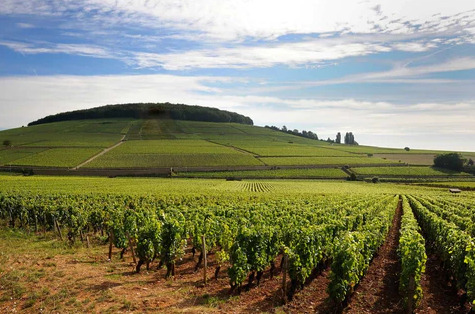
What’s the Best French Wine for You?
France is the third-largest wine-producing country after Italy and Spain, but it leads the popularity charts, as it has done so for centuries. French winemakers have influenced every wine-producing country in one way or another.
In fact, the most planted varieties worldwide are French, including Cabernet Sauvignon and Chardonnay. And it’s not only the grapes; the grape growing and winemaking techniques perfected in France since ancient times are now used globally. From the types of bottles used by everyone to the oak barrels where most of the world’s red wine ages — it all comes from France.
French wine is a complex topic, but it’s one best enjoyed with a glass of wine in hand. Let’s take a quick tour through the French wine regions and find the right wine for you.
French Wine Regions
Unlike New World wine-producing countries, you cannot categorise and study French wine by grape variety but by location. There are eight major wine regions in the country, each home to dozens of wine styles and grape varieties.
Understanding the customs and traditions in these regions is the fastest and most exciting way of getting to know French wine. This guide will cover the most important French wine regions with the notable exception of Champagne, which deserves its own guide.
The French appellation system not only protects wine styles but demands producers to follow strict rules in the fields and winery to guarantee the wine’s quality and typicity. This basically means French wine is good by law! These are the most significant wine regions in France and the wine styles you’ll find in them.
Bordeaux
Bordeaux is the spiritual home of distinguished grapes, such as Cabernet Sauvignon, Merlot and Cabernet Franc. Here, Chateaux or wine estates blend these grapes for complex and robust red wines. Although most of the wine here is actually affordable, the best labels are some of the most expensive in the world, and these wines can age for decades.
Bordeaux is also a source of white wine made with Sauvignon Blanc and Semillon, with a splash of floral Muscadelle. And let’s not forget about Sauternes, perhaps the most memorable dessert wine in the country — it’s also made in Bordeaux.
Notable Appellations: Bordeaux, Sauternes, Pauillac, Margaux, Saint Emilion, Pomerol.
Wine to Try: Chateau Maucamps Haut-Medoc Cru Bourgeois 2016
Burgundy
Producers in Burgundy specialise in two main wine styles: Elegant red wines made with Pinot Noir and expressive white wines made with Chardonnay. Again, this is the origin of such prominent grapes and arguably the source of their greatest expressions. Burgundy runs north to south in a series of slopes, which give ideal orientation to the vineyards — most of them going back to the Middle Ages. They were once tended by monks!
Notable Appellations: Chablis, Montrachet, Beaune, Corton, Mersault, Pommard.
Wine to Try: Domaine Collotte Marsannay Vieilles Vignes, 2016 Cote de Nuits, Burgundy
Rhône Valley
The Rhône Valley is south of Burgundy. Here, the weather is warmer, which means the landscape turns arid and dusty. It is in this harsher climate where heat-resistant grapes thrive. Syrah, Grenache and Mourvedre are the most popular red varietals, and they’re often blended to produce rustic but charming wines.
White grapes in the region include the floral Viognier, Marsanne and Roussanne, and they can also become bold, age-worthy white wines suitable for any occasion.
Notable Appellations: Châteauneuf-du-Pape, Côtes du Rhône, Côte Rotie, Crozes-Hermitage, Hermitage, Condrieu, Vacqueyras, Gigondas.
Wine to Try: Mont Redon RED Cotes du Rhone 2019
Loire Valley
The Loire Valley is an extended wine region stretching from the Atlantic Ocean to the Parisian Basin. The wine styles change as one travels inland.
The refreshing Muscadet is typical on the coast, followed by dry, sweet and sparkling wines made with Chenin Blanc. Finally, Sauvignon Blanc dominates the Valley’s vineyards.
Red wine made with Cabernet Franc and Pinot Noir is popular as well. The Loire Valley is one of the most complicated regions, as it has dozens of microclimates.
Notable Appellations: Muscadet, Vouvray, Savennières, Chinon, Pouilly Fumé, Sancerre.
Wine to Try: Domaine Pichot Coteau de la Biche Vouvray Sec 2020
Alsace - Jura - Savoie
Alsace is a beautiful wine region bordering Germany. The neighbouring country profoundly influences the region’s architecture, food and wine. This is white wine country, and producers craft their finest wines with Riesling, Pinot Gris, Muscat and Gewürztraminer.
Jura and Savoie are two wine regions in the Alps and are a source of lesser-known wines that are often of the highest quality. Jura’s most famous wine is the notorious yellow wine, or Vin Jaune.
Notable Appellations: Alsace, Alsace Grand Cru, Crémant d’Alsace, Côtes de Jura.
Wine to Try: Trimbach Pinot Blanc 2017
Provence
Provence overlooks the sunny Mediterranean Coast, and it’s home to the famous French Riviera — the ultimate luxury destination. Provence is all about its rosé, perhaps the most charming pink wine globally. Think of a dry, refreshing salmon-hued wine that’s perfect for summer.
Several grapes are used in the area, including Syrah and Grenache, but there are others. The region’s white wines are lovely as well, and they’re made with Rolle AKA Vermentino.
Notable Appellations: Cotes de Provence, Bandol.
Wine to Try: Saint MAX Cotes de Provence Rose MAGNUM 2019
Languedoc-Roussillon
Languedoc-Roussillon covers most of Southern France. Most of the wine made in France comes from this warm area, although not all is of the highest quality.
This doesn’t mean there aren’t cellar-worthy wines in the area; there are many talented producers working with a wide range of grapes, from Syrah and Cabernet to Chardonnay and Pinot Noir. Producers label most of the inexpensive wine made in the area as Vin de Pays d’Oc.
Notable Appellations: Minervoise, Fitou, Corbieres, Banyuls, La Clape, Pays d’Oc IGP.
Sud-Ouest
South-West France is a wine region in its own right, and it’s made of several appellations, most often championing local grape varieties and wine styles. Red wines made with Malbec and Tannat, or sparkling wine made with the ancestral method. Sweet or dry, red or white, there’s plenty to choose from in this less-popular region.
Since most of the appellations in the area are not as well known as Bordeaux or Burgundy, the wine from the Sud-Ouest has an excellent quality-price ratio.
Notable Appellations: Madiran, Gaillac, Jurancon, Cahors.
Wine to Try: Chateau Bouscasse Madiran 2013
French Wine Is Incredibly Varied
Now that we’ve taken a quick tour around the French vineyards, you know what grape varieties and wine styles to expect from every region. French wine is all about a “sense of place” or terroir, and it is true; the wine takes you places with every sip!
From age-worthy red wines to summer sippers, French wine producers have your back — there’s a French wine for every food pairing, occasion and budget. Yes, great wine can come from every corner of the earth, but everyone looks at France for inspiration.
0 notes
Text
Week-end à Gigondas
Prendre quelques jours dans le sud de la France, à Gigondas, pour déguster du vin et grimper sur les Dentelles de Montmirail. Un petit stop au Mont Ventoux pour admirer la vue depuis ce sommet et encourager quelques cyclistes courageux, avant de rejoindre Gigondas. Nous avions loué un petit appartement qui acceptait les chiens dans les alentours. Nous avons fait une dégustation de vin au Domaine…
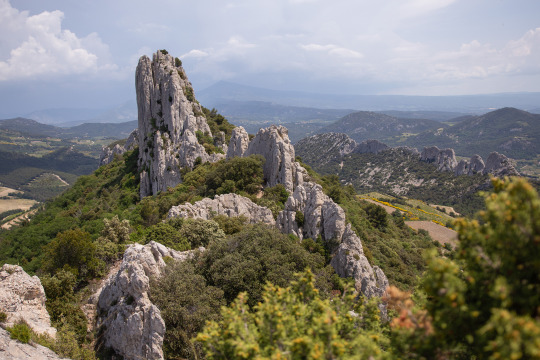
View On WordPress
0 notes
Text
Guigal Gigondas 2011
Guigal Gigondas 2011 là một loại rượu vang đỏ cao cấp đến từ vùng Gigondas ở Côtes du Rhône, miền nam nước Pháp. Được sản xuất bởi nhà máy rượu vang danh tiếng E.Guigal, rượu vang Gigondas được coi là một trong những loại rượu vang nổi tiếng và được người yêu rượu trên khắp thế giới ưa chuộng.
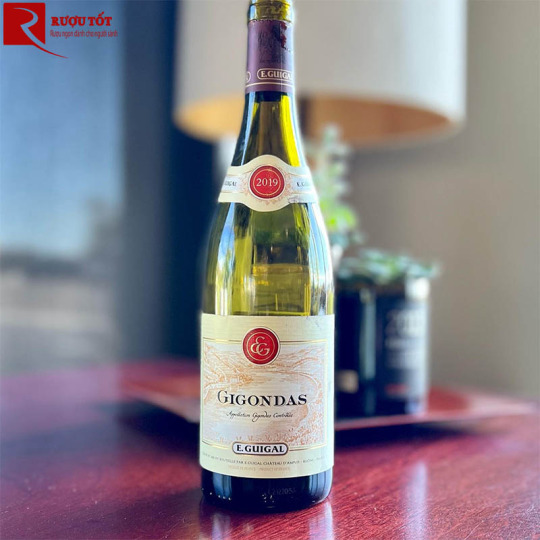
0 notes
Text

Scène de un ruelle, Gigondas, Vaucluse, 2016.
#streetscape#steep#stone buildings#gigondas#vaucluse#provence-alpes-côte d'azur#france#2016#photographers on tumblr
49 notes
·
View notes
Text
Nahe: Exquisitely Tuned

Hectares under vine: 4,239 (2023)
Climate: mild, low frost and low rainfall
Soils: Quartzite and slate soils on the lower Nahe; porphyry, melaphyre, and red sandstone on the middle Nahe; weathered soils and clay overlays of sandstone, loess, and loam near Bad Kreuznach
Varieties: [white 76.2%, red 23.8%]: Riesling (29%), Müller-Thurgau (12%), Pinot Gris (8.2%), Pinot Blanc (7.4%), Dornfelder (9.7%), Spätburgunder (6.7%)
Bereich: Nahetal
Einzellagen: 310, including Niederhäuser Hermannshöhle, Schlossböckelheimer Kupfergrube, Königsfels, Felsenberg, Monzinger Frühlingsplätzchen, Dorsheimer Goldloch
“The best [Nahe Rieslings] are exquisitely tuned…” – Ian Jamison, German Wines
When Ian Jamison’s German Wines came out in 1990, Müller-Thurgau was still the dominant variety in the Nahe, with 23.2% of the vineyard area. Riesling was in second place at 12% (his figures were from 1988), and unless you’ve been following Nahe wines long enough to observe this evolution, it’s a shocking statistic given the number of benchmark Riesling producers clustered here today. These include Dönnhoff, Schäfer-Fröhlich, Schlossgut Diel, Emrich-Schönleber, and Gut Hermannsberg, all first-rate VDP estates whose GG Rieslings I’ll often rate among the best in Wiesbaden each August. Riesling is now in the first position in the Nahe, and rightly so. Jamison writes, “It is perfectly possible to persuade yourself that the River Nahe produces the finest Riesling wines in the Rheinland and, therefore, in the world.” For this taster, no further persuasion is necessary.
The Nahe became an independent wine region in 1971. Before that, wines from the river Nahe were labeled simply as Rhein wines, and, as Frank Schoonmaker writes in The Wines of Germany, “All Nahe wines, being more akin to Rhine than to Mosel, are shipped in brown bottles.” It’s essential to clarify that Nahe wines are, stylistically speaking, not some halfway point between Mosel and Rheingau or Rheinhessen. The wine trade (me included) has repeated this almost as frequently as “Gigondas is like a baby Châteauneuf-du-Pape!” Hey, when a sale is on the line, I get it, but there’s no reason to “sell” Nahe wines this way, not when they’re some of the finest in Germany. There is indeed Riesling from steep slate slopes in the Nahe, and like the Mosel, Nahe producers can make stunning Prädikatswein, but Nahe wines do not smell or taste like Mosel, or Rheingau, or Rheinhessen. Nahe is unique, and much of its uniqueness comes from the soil.
The Nahe has the widest variety of soils in Germany due to 400 million years of geological upheaval. Schist, volcanic, loess, clay, and limestone are some of the 180 or so assumed soil types within the Nahe wine region. Britta Korrell of Weingut Korrell in Bosenheim told me the Nahe gained the nickname das Probiertstub’chen (the tasting room of Germany) because they have so many different soils, varieties, and microclimates. Protected from the cold winds by the high Hünsruck mountains, mild temperatures, much sunshine, and very little rain create an excellent climate for the vine. Although administratively, a single Bereich (Nahetal) covers the entire Weinanbaugebiet. Practically speaking, there are three subdivisions of the Nahe region and its 116-kilometer river: lower, middle, and upper. Generally, the Upper Nahe vineyards are cooler, while the Middle and Lower Nahe get progressively warmer, and harvest occurs earlier in Lower Nahe than in the Middle or Upper.
Lower Nahe
Beginning at Bingen, where the Nahe joins the Rhein, to Bad Kreuznach is the Lower Nahe. Directly across the Rhein from Bingen is the Rheingau’s Rüdesheimer Berg. Upriver, several famous wine villages are found, starting with Münster-Sarmsheim (home of the excellent VDP.Weingut Kruger-Rumpf) and Rümmelsheim/Burg Layen (home of Diel). There’s grey Devonian slate at Münster-Sarmsheimer Im Pitterberg, then loam, clay, and gravel at a trio of superb Grosse Lage sites in Burg Layen (technically belonging to Dorsheim): Pittermännchen, Goldloch, and Burgberg. The next grouping of Grosse Lagen in the Lower Nahe is at Bad Kreuznach, Nahe’s commercial center. Kahlenberg and Krötenpfuhl (produced by Dönnhoff) feature loam, loess, and gravel, and off to a side valley in Wallhausen, Felseneck (Prinz Salm) has green schist. By the way, Bad Kreuznach is also home to Weingut Korrell (Bosenheim) and their excellent Paradies vineyard with shell limestone and marl. A final note about the charming spa town of Bad Kreuznach is to mention the Anheuser name; the same Anheuser family (cousins) as St Louis’ Anheuser-Busch are wine producers here.
Middle Nahe
Five kilometers upriver from Bad Kreuznach are Bad Münster and Traisen, where massive porphyry rocks are both a tourist attraction and a gate to the Middle Nahe. The steep and volcanic Traisner Bastei is the first significant site, then Rotenfels, then Mühlberg and Steinberg (both produced by VDP.Weingut Dr. Crusius), before slate sets in at Norheimer Kirscheck and Dellchen. Neighboring VDP estates Dönnhoff and Gut Hermannsberg exploit the vineyards at Niederhausen and Oberhausen. Grey slate and limestone make Hermannshöhle one of the most highly reputed sites in the Nahe, while Schloßböckelheimer Felsenberg and Kupfergrube did not even exist before they were created by the State Domain (with the help of convict labor) in 1901. These volcanic sites and the top-class Oberhausen Brücke are some of Germany’s best.
Upper Nahe
After Schloßböckelheim, I’ll point out Königsfels and In den Felsen, which make their way into Korrell’s Von den Ersten Lagen bottling along with the previously mentioned Rotenfels and Felsenberg. At Bockenau (Schäfer-Fröhlich) and Monzingen (Emrich-Schönleber) are Felseneck with Devonian slate and Monzingener Frühlingsplätzchen with red slate. These are the coolest vineyards in the Nahe and arguably some of the best. The Nahe wine region ends at the wine village of Martinstein.
0 notes
Photo
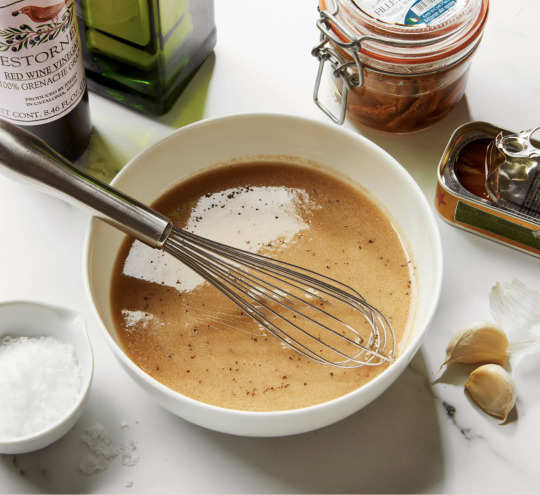
Anchoïade | Patricia Wells
As a special treat during my cooking classes in Provence, we often have a catered picnic lunch under the pine trees near the belvedere above the village of Gigondas. It is chef Johannes Sailer and his staff who drive up the hill (we often hike) and deliver a sumptuous picnic of fresh foods, usually including a giant platter of vegetables to accompany this exquisite anchovy dip, a typical Provençal sauce made up of salt-cured anchovies, olive oil, vinegar, and garlic. I like to serve anchoïade with freshly steamed whole cauliflower showered with a touch of fresh parsley from the garden.
Ingredients
Makes about 1¼ cups
8 plump, salt-cured whole anchovies (or 16 oil-packed filets)
2 plump cloves garlic, peeled
2 tsp. best quality red wine vinegar
1 cup extra virgin olive oil
Fine sea salt
Freshly ground black pepper
Instructions
Step 1
If you’re using salt-packed anchovies: At least 5 hours (and up to 24 hours) before preparing the anchovy dip, soak the anchovies: Rinse them, cover with cold water, and refrigerate until ready to prepare the dip.
Step 2
Remove the anchovies from the water, drain, and separate into fillets, pulling them apart and removing the central bones. Rinse and drain.
Step 3
In the bowl of a food processor or blender, combine the drained anchovies, garlic, and vinegar. Process to blend. With the machine running, slowly pour the oil through the tube and process again. Season to taste. Stir again before serving.
0 notes
Photo
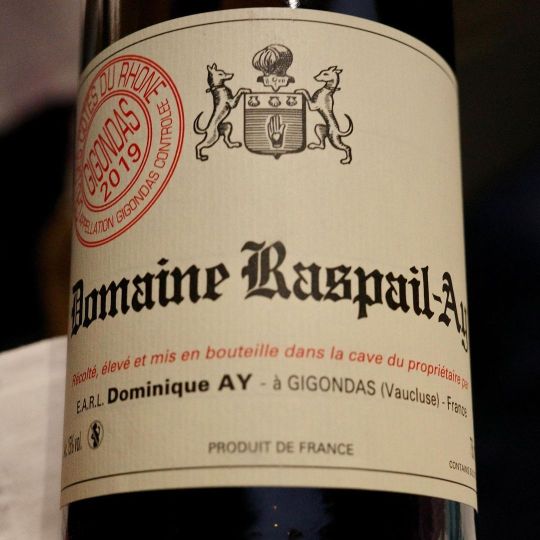
Domaine Raspail-Ay - Gigondas 2019 - Blue by Alain Ducasse x Meta - 28 August 2022 https://www.instagram.com/p/CnPQccsSBFl/?igshid=NGJjMDIxMWI=
0 notes
Photo

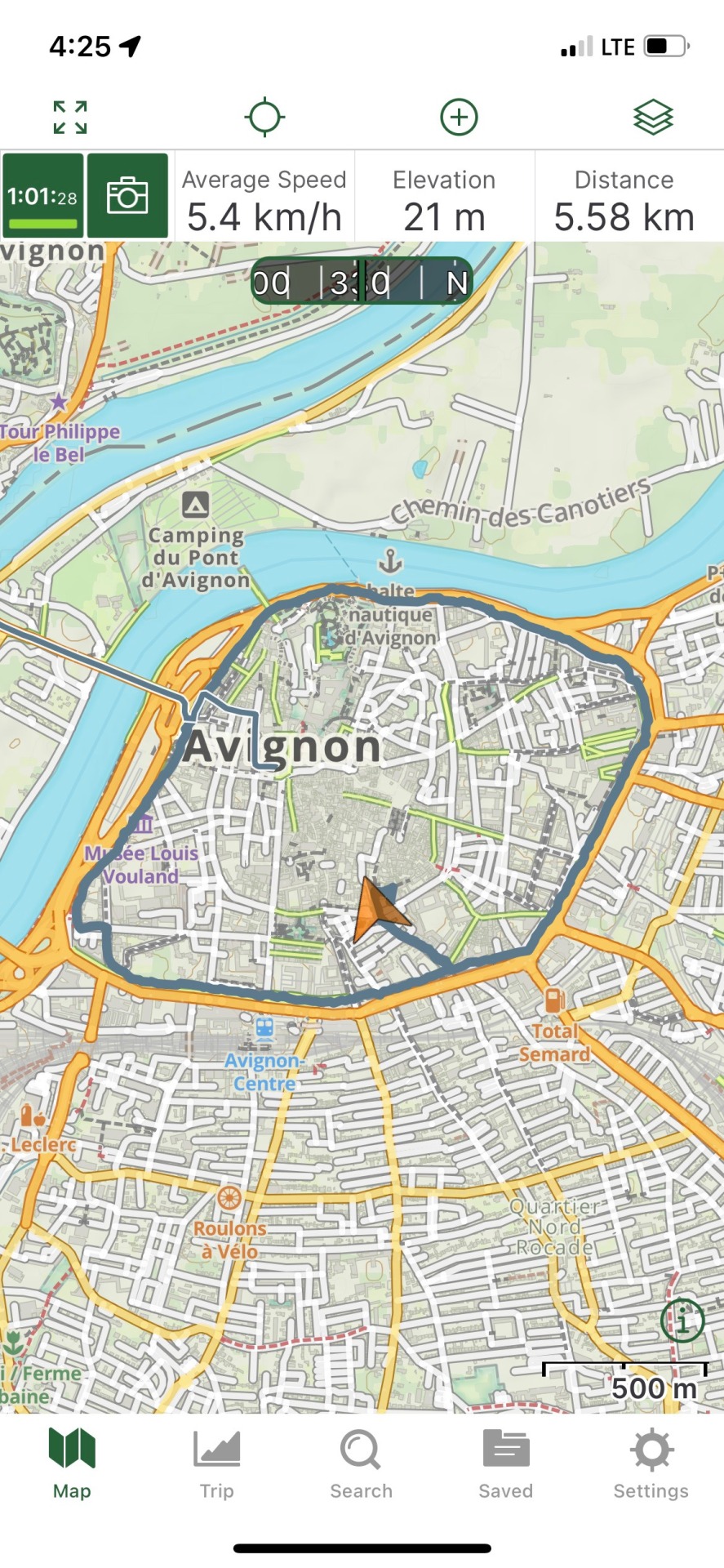


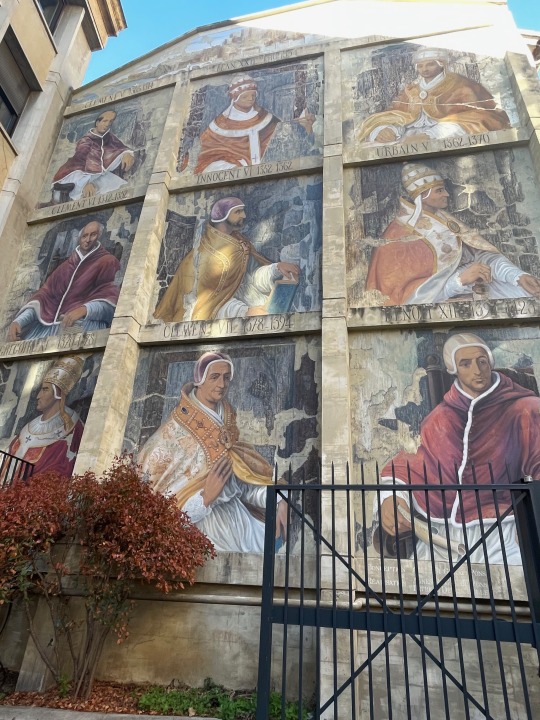
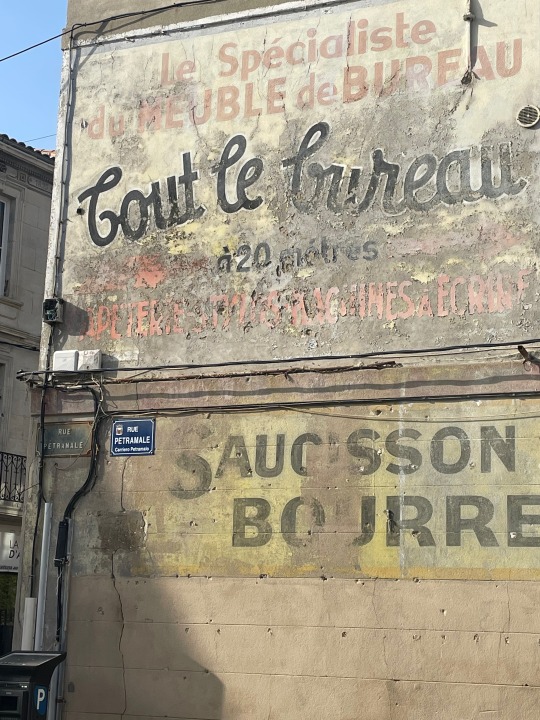

Avignon - One Bridge, Nine Popes, and Wine
“Sur le pont d’Avignon - En y danse, en y danse”
The Rhone is a massive force draining the Alps into the Mediterranean. As it flows past Avignon, its power is reduced into two channels around an island and between two natural rock fortresses; it was the only feasible place to build a bridge. Legend has it that a shepherd from Ardèche heard voices telling him to build the bridge that was completed in 1185; the legend doesn’t tell us HOW Saint Bénezet managed to build a 900 meter bridge with 22 arches so that’s another story.
The bridge was dismantled in 1226 and rebuilt and washed away a few times before it was abandoned in its current form in the 17th century with the chapel to St. Nicolas and just four of its now iconic arches leading to nowhere but the middle of the Rhone.
Fast forward a century from Bénezet to the tensions between the French crown and the papacy and the death of Pope Benedict XI in 1305. The French king forced the divided cardinals to elect a French Pope, Clement V, who set up shop in Avignon as he was not exactly welcome, or safe, in Rome. Avignon was a logical choice given its strategic position on routes from the north to the Mediterranean, and with the only river crossing between catholic Spain and Italy.
Fun fact: All over Avignon there are sites recognizing the nine French popes but the last two are nowhere to be seen on the Vatican website today; the modern equivalent of excommunication; cancel culture all the way back to the 14th century; if you are not on the Vatican website you didn’t exist. The anti-Popes Clement VIII and Benoit XIII were not recognized in Rome at the start of the Western Schism that lasted to 1417, where bishops in Avignon, Rome, and later Pisa, all claimed to be Pope.
Today, Avignon is a thriving, beautiful, walkable, commercial centre of the wine industry in the Southern Rhone - Ventoux, Chateauneuf du Pape, Gigondas, Cotes du Rhone - and a quick stop for river cruises. It is one of the few cities in the world with its 14th century ramparts are still completely intact - a very pleasant 5K walk any time of year.
The engraving from 1649 shows parts of the bridge that were missing - the beginning of the end. We can also see our apartment in a building that was completed in 1595 near the former St. Joseph church. The map is approximate at best but you could still use it navigate Avignon today.
0 notes